Addressing Tears or Damage on Your Artificial Turf
Many homeowners and businesses choose artificial turf for its low-maintenance, evergreen, and water-saving qualities. While it is a durable product, it is not indestructible. Even with proper maintenance and care, artificial turf will likely need some repair work over time.
Common Causes of Artificial Turf Damage
Before attempting repairs, you will need to identify the root cause of the issue(s). Extreme heat is one cause of damage. It can melt the synthetic blades causing the turf to become deformed and misshapen. This damage may come from heat from BBQ grills and smokers or fire pits and ash. Harsh chemicals also can burn or damage artificial turf by compromising the structural integrity of the overall surface. You may notice fading, discoloration, or withering with chemical exposure.
Contact with sharp objects often results in slices in the turf or damage to the turf blades. If you’re using rakes, shovels, or other garden tools around your artificial turf, you’ll need to be careful to avoid contact with the turf. When brushing the blades of turf, choose a synthetic bristle comb rather than metal combs to avoid damage. Extremely heavy objects resting on the turf can matt or damage the blades over time. Avoid parking vehicles at any time on the synthetic turf, and shift the placement of equipment, furniture, or heavy flower pots to avoid prolonged exposure to heavy weights. Playground equipment should be strategically placed to avoid needing to move it later.
Most maintenance requirements are easily managed by homeowners and businesses, and many repairs can be handled quickly. If you notice big issues such as poor drainage or sagging, seek a professional for advice. Goat Turf professionals can help you assess any artificial turf issues and assist with repair needs.
How To Repair Portions of Artificial Turf
The first step to repair work is to assess and identify the type(s) of damage. Tears, cuts, and burns are the most common and are typically easy to repair. Weed infiltration is rare, but can occur, especially around the edges or through small holes. Poor drainage could be the result of an incompatible base layer or compacted infill in high-traffic areas.
The next step, and one that is often overlooked, is to identify the direction of the rows of fibers. The replacement portions need to match the existing turf if you want a seamless and cohesive repair. Then you will want to remove the infill material and clean the area with a mild detergent. This allows for better visibility of the backing so your repairs can be more accurate and efficient. When it comes time to cut the damaged areas, be sure to use a sharp utility knife or scissors for precision as well as protection of the surrounding blades. Dull knives can damage the blades, impacting the look of the repair. Carefully remove the piece without disrupting the surrounding area.
Seam tape should be applied at the center of the repair area with nails to make sure it stays put. You may want to apply some painter’s tape to the surrounding blades to protect them from the adhesive. Then, using a trowel for a uniform application, spread the adhesive recommended by the manufacturer. You’ll need a consistent and thorough coating. After carefully measuring and cutting out the replacement piece, place it down, pressing firmly to verify a snug fit and maximum bonding. If you placed painter’s tape on the surrounding turf, you can safely remove it at this point. Gently brush the entire area to make sure everything is blending well.
Maintaining a Beautiful Synthetic Lawn
Keeping artificial turf looking great requires some consistent attention and care. Although it’s less upkeep than standard grass, you will still need to monitor and address areas of concern before larger problems arise. After performing any maintenance, try to avoid walking on or using the repaired sections for a few days. This allows the adhesive to set properly and bond securely. After this period, you can perform your standard upkeep practices and use the area as you normally would. For smaller issues, such as a lifted edge or seam, you can often reattach those portions with nails or adhesive without having to remove full sections. Weed growth can be removed quickly by hand, or you can pour boiling water over the weeds to avoid discoloring or damaging the turf.
Search for Artificial Grass Suppliers for Repairs
If you would like to find out information on the benefits of artificial turf, let’s discuss the available options for your project with Goat Turf. Artificial turf is long-lasting, reduces the use of water and fertilizers, and looks good all year long. Goat Turf has all the products needed for proper turf installation and maintenance. Whether you are a home or business owner, our wholesale company has the necessary tools and experience for your artificial turf projects.

